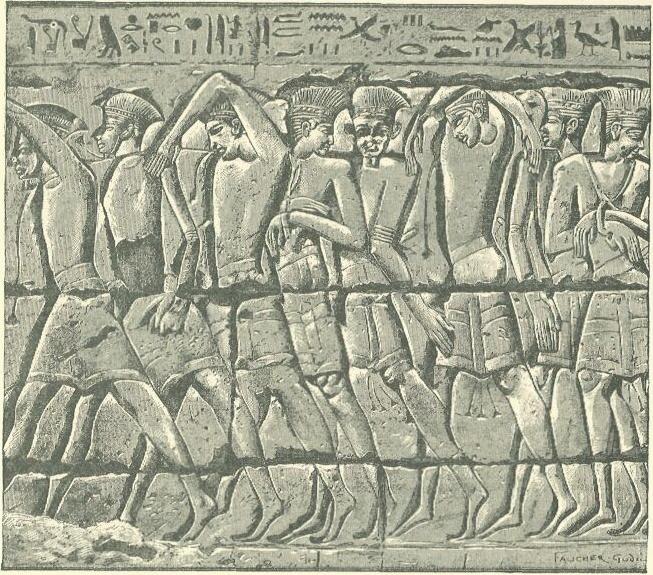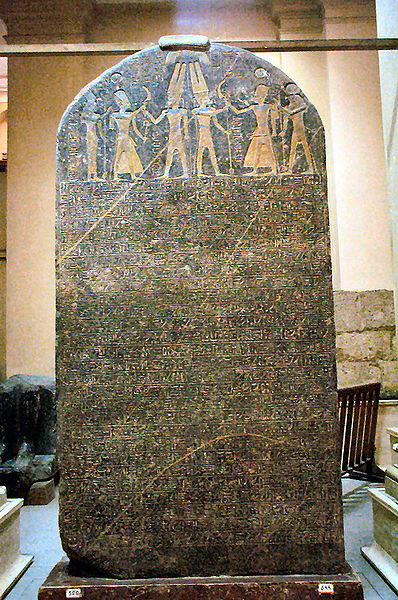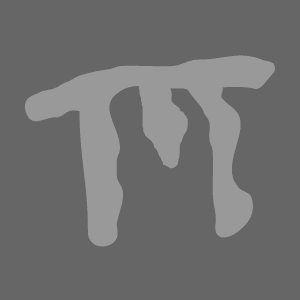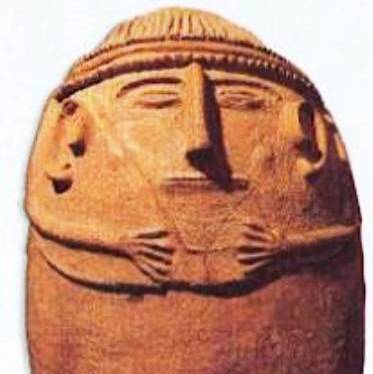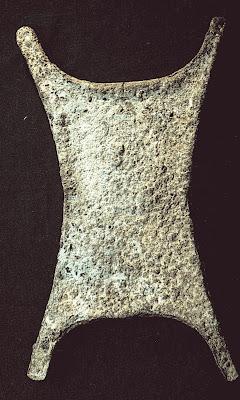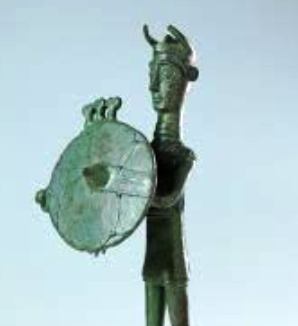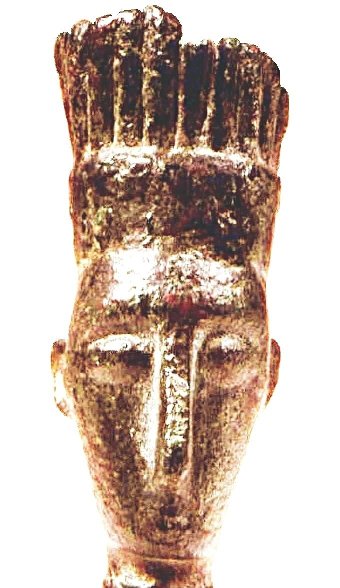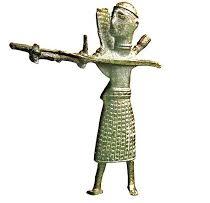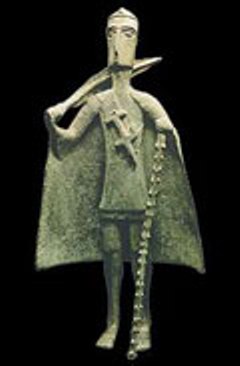|
The return of most of the Teucers and Danaans from Palestine to the
Greek peninsula, allowed the Philistines to assimilate and/or submit
how many of the former were remained in the land of Canaan, where
the eleventh century BC can
be considered the century of the Philistines. This dominance seems
to continue until the middle of the tenth century .
Over
time - returning to the iconography - it appears in Palestine a
sarcophagi ceramic where the deceased is depicted with one or more
cords around his forehead, retaining their grouped hair into
braids or - according to somebody - the plumage of the helmets of
the Pheleset as in the inscriptions of
Medinhet Abu.
But
the "diaspora" of the Sea Peoples was not limited to the return to
the Helladic peninsula and the islands of the Aegean Sea. In
the Late Bronze Age, Sardinia seems to have been a popular
destination and the immigration of the Sea Peoples there was
contemporary, if not a few decades earlier, with the Doric invasion
of southern Greece and the islands.
Sardinia
had already had dealings with Cyprus, since the last decades of the
Middle Bronze Age: numerous copper ingots from the typical shape of
a bull's skin of Cypriot origin, as indicated by thermoluminescence,
and, in some cases, marked with letters Cypro-Minoan
alphabet .
The "Sardinian bronzetti", wrongly defined by certain "nuragic"
ones, are the key of evidence of the arrival of the Sea Peoples on the island.
A
detailed study conducted on 632 specimens found mainly in Sardinia,
but also in other parts of the Mediterranean, identified around the
XI - XII century BC
the time of their appearance on the island, up until their end,
which occurred around V -VI century.
264 statuettes are anthropomorphic,
216 zoomorphic , 146 represent
only 3 spacecraft and models of Nuraghe.
In addition, the study found out the succession in time of two
particular schools of production: the oldest, called Uta/Albini ,
which flourished between the twelfth and ninth centuries and the
most recent, generically called "Mediterranean" , from the IX to V
century.
The
workshops are all identified as sardines.
What
is surprising is the iconography of the anthropomorphic figurines,
especially those representing warriors, as their clothing finds
exact matches in Egyptian reliefs depicting Sea Peoples.
The
majority of local bronzes, in fact, wearing a horned headdress,
the bodice and the type of sword of Shardanas, resoundingly
confirms the etymological identity between the name of this
people and the Mediterranean island.
A
significant percentage of bronzes wearing feathered headdress of
Pheleset, as well as greater local deity: the Sardus Pater.
There
is no shortage bronzes identical to the representations of the
Philistinian sarcophagi of ceramics, with one or more cords
around his forehead, and - perhaps - restraining grouped hair in
pigtails.
We
have also found numerous statues with the plume of Weshesh and, in
rare cases, even heads of priests, with a headdress that could be
identified with that of Teresh.
The latter, however - like many others - especially wearing a bronze
gamma-shaped dagger hilt," which does not seem to find
evidence in depictions of Medinhet Abu, which could be an
indication of an adaptation of weapons to the different
socio-cultural
local
situations
level: no more weapons for large encounters between peoples
in the open field or on ships, but probably only a status symbol of
personal authority of the chiefs .
Other
statues of priests wear a wide-brimmed hat, heighter than
the headdress battle field or parade ones.
The
oldest dating statues (XI - XII century) and their
place of production, often within the island, stated that the
arrival of the Sea Peoples - in this case led by the Shardanas
warriors - may precede
the
Dorian invasion of the Peloponnese and the Aegean islands, if it's true
the date for this event specified by Eratosthenes (1104 BC).
The
dates given by the study of Araque Gonzalez finally prove beyond a
shadow of a doubt that the arrival of the Sea Peoples in Sardinia
preceded the Phoenicians ones, not dated before 750 BC
and, of
course , even the Carthaginians.
Everything
leads us to believe that the landing of the Sea Peoples has not had
a particularly bloody with the local populations.
Recent
archaeo-astronomical studies, in fact, have shown that many nuragic towers, built in previous centuries by indigenous
peoples, in fact, were not impregnable fortresses but places of
astronomical worship and religious ceremonies.
Local
populations, basically peaceful and dedicated to agriculture and
livestock, should have easily subjugated to warlike warriors
and navigators elites.
Warriors
with the same Shardanas headdress and the same kind of weapons
depicted in the course of the menhirs of Filitosa site, dated in
the Late Bronze Age.
This shows that consisting groups of Shardanas have also reached and
submissive part of Corsica.
|
